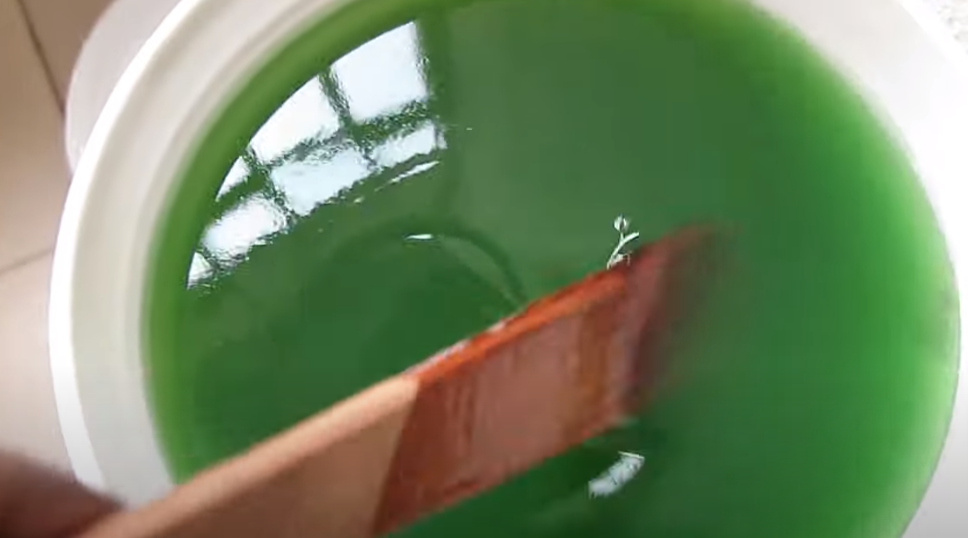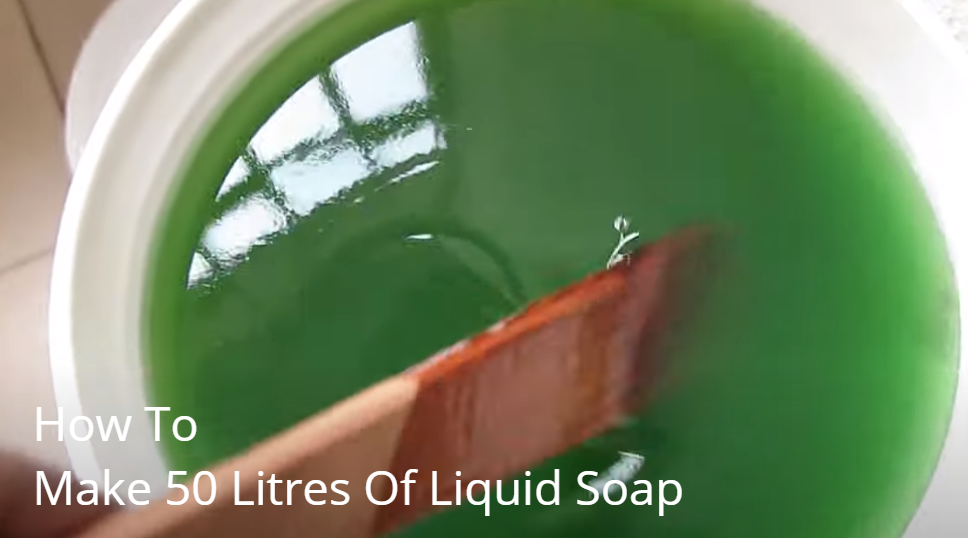Hello and welcome back to Naijacloud, today we are going to look at How to Make 50 Litres of Liquid Soap.
It’s quite easier than you think it is if you follow the simple steps I would be teaching you today.
Liquid soap is a versatile cleaning product that can be used for a variety of purposes such as hand washing, dishwashing, laundry, and even as a shampoo.
Making your liquid soap is a great way to save money and customize the product to your needs.
In this post, we will discuss the step-by-step process of making 50 litres of liquid soap. I have a post on how to make 25 liters of soap, you can check it out if you find it useful.
Ingredients to Make 50 Litres of Liquid Soap
The first step in making liquid soap is to get all of the ingredients together. Here are the things you need to make 50 liters of liquid soap:
- 5 kg of sodium laurel ether sulphate (SLES)
- 2 kg of cocamidopropyl betaine (CAPB)
- 1 kg of sodium chloride
- 200 grams of sodium benzoate
- 200 grams of citric acid
- 50 litres of distilled water
- Fragrance oil or essential oil (optional)
- Colorant (optional)

Equipment to Make 50 Litres of Liquid Soap
Besides the ingredients, you’ll also need the following tools. Kindly note them and make sure you get them as you would find them useful:
- Large mixing bowl
- Stirring rod or whisk
- pH meter or pH test strips
- Measuring cups and spoons
- Thermometer
- Containers for storage
How to Make 50 Litres of Liquid Soap
Now that you have all the materials and tools, you can start making the liquid soap.
In case you find the tutorial too hard or confusing, you can check the video I attached for better understanding.
Follow these step-by-step directions:
Measure the Ingredients
After taking the appropriate amounts, pour the SLES and CAPB into the large mixing bowl. Blend them together to the point when they are perfectly blended.
Add Sodium Chloride
Put the sodium chloride in the bowl with the other ingredients, and stir it up until it’s dissolved.
Add Preservatives And Heat The Mixture
In a mixing dish, add the sodium benzoate and the citric acid, then whisk the mixture until the two ingredients are thoroughly blended.
Place the contents of the bowl into a sizable pot, then heat it over low to medium heat while stirring it frequently.
Make sure to keep an eye on the temperature by using a thermometer.
Add Water and Adjust PH
When the temperature of the mixture hits 60 degrees Celsius, start adding the distilled water while stirring carefully.
Take care not to splatter the ingredients together.
To determine the pH of the solution, you can either use a pH meter or pH test strips. The pH level should be between 6 and 7, at the very least.
If the pH is excessively high, a little bit of citric acid in a diluted solution should be added. If the pH is excessively low, a little bit of sodium hydroxide can be added to raise it.
It’s not compulsory tho.
Bottle
After the mixture has reached room temperature, you can add colorant and fragrance oil or essential oil, according on your preferences.
After the soap has completely cooled, place it in the containers that you intend to use for storage.
How to Make 40 Litres of Liquid Soap
The process of creating 40 liters of liquid soap is quite similar to the process of making 50 liters, however, the measurements need to be changed.
The following are the rough proportions that should be used to make 40 liters of liquid soap:
- 1000g SLES
- 400g CAPB
- 250g NaOH
- 500g salt
- 38 litres distilled water
Follow the same procedure outlined in the article, but adjust the measurements accordingly.
How to Make 20 Litres of Liquid Soap
You can reduce the amount of liquid soap you manufacture by adjusting the measurements in accordance with your preferences.
The following are the rough proportions that should be used to make 20 liters of liquid soap:
- 500g SLES
- 200g CAPB
- 125g NaOH 250g salt
- 19 liters of water
Proceed according to the procedure described in this blog post, but make any necessary adjustments to the measurements.
How to Make 10 Litres of Liquid Soap
You can use the following measurements, which are approximations, to create 10 liters of liquid soap:
- 250g SLES
- 100g CAPB
- 63g NaOH 125g salt
- 9.5 litres of distilled water
Proceed according to the procedure described in the post, but make any necessary adjustments to the measurements.
How to Make 5 Litres of Liquid Soap
If you want to make a smaller batch of liquid soap, you can adjust the measurements accordingly.
Here are the approximate measurements for making 5 litres of liquid soap:
- 125g SLES
- 50g CAPB
- 31.5g NaOH
- 62.5g salt
- 4.75 litres distilled water
Follow the same procedure outlined in the article, but adjust the measurements accordingly.
FAQ
Can I use other types of surfactants instead of SLES and CAPB?
Other forms of surfactants, such as sodium lauryl sulfate (SLS), coco glucoside, or decyl glucoside, can be used, as well.
However, because various surfactants each have their unique qualities, you might need to make some adjustments to the recipe.
Can I use tap water instead of distilled water?
I recommend using distilled water to ensure that there are no impurities in the soap.
Tap water may contain minerals and other contaminants that can affect the quality of the soap.
Do I need to add preservatives to the soap?
It is necessary to include preservatives in the soap to forestall the formation of bacteria and fungi.
Both sodium benzoate and citric acid are frequently used in liquid soap because of their preservation properties.
Can I use food coloring instead of colorant?
I do not recommend using food coloring as it may not be stable and can stain skin or clothing.
It is best to use colorants specifically formulated for soap making.
Conclusion
It might seem hard to make 50 liters of liquid soap, but if you have the right ingredients and tools, it can be fun and rewarding.
Follow the step-by-step instructions and tips in this article to make a high-quality liquid soap that you can change to suit your needs.
Don’t forget to wear safety gear and be careful when handling the ingredients and hot mixture.
Happy soap-making!










